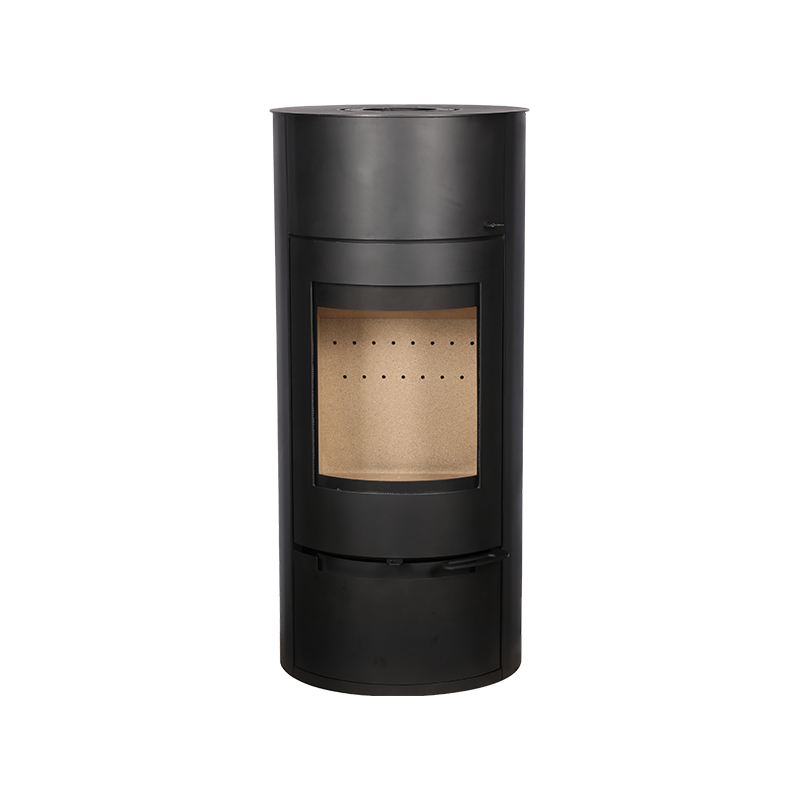Wood burning fireplaces have long been celebrated for their ability to provide warmth, ambiance, and a sense of coziness. A traditional wood-burning fireplace, with its crackling flames and rustic charm, can easily become the focal point of any room. However, beyond their functionality, these fireplaces also offer opportunities for enhancing the overall aesthetic of a living space. One of the ways homeowners and designers achieve a harmonious and appealing look is through color treatments applied to the fireplace structure. The right color treatment can complement the room's décor, elevate the ambiance, and even extend the lifespan of the fireplace.

A wood burning fireplace is often a central element in a room, so it plays a significant role in the overall design and atmosphere. When choosing color treatments for the fireplace, it's not just about aesthetics; there are also practical considerations involved. Color treatments can improve the longevity of the materials, protect the structure from heat damage, and make cleaning and maintenance easier.
Whether you're looking for a traditional, rustic look or a sleek, contemporary feel, color treatment provides a versatile way to alter the fireplace's appearance. Moreover, a well-chosen color treatment can make the fireplace feel integrated into the room's design rather than an afterthought.
The process of color treatment for wood burning fireplaces can be broken down into several categories, each with its specific products and techniques. The common color treatments involve painting, staining, and finishing with specialized products designed for high heat environments. Below are the main options available:
1. Heat-Resistant Paint
One of the common methods of color treatment for wood burning fireplaces is using heat-resistant paints. These paints are specially designed to withstand high temperatures without peeling, blistering, or discoloring over time. Available in a variety of colors, heat-resistant paints allow homeowners to customize the look of their fireplace while ensuring that the structure remains safe and functional.
Benefits of Heat-Resistant Paint:
Wide Range of Colors: Heat-resistant paints come in various finishes and colors, from matte to glossy. Popular colors include black, gray, white, and bronze, but custom colors are also available.
Ease of Application: Heat-resistant paint is relatively easy to apply, and it can be used on various surfaces like steel, cast iron, or brick. Depending on the type of paint and surface, application might require just one or two coats.
Protection and Durability: The paint not only changes the fireplace's color but also adds a layer of protection against heat, soot, and smoke stains, which can contribute to the structure's durability.
Considerations:
Regular Maintenance: While heat-resistant paint is durable, it may require occasional touch-ups, especially if the fireplace is used frequently. Over time, certain areas that experience direct heat may need to be repainted.
Ventilation: Proper ventilation is essential when applying heat-resistant paint, as the fumes can be strong. Always follow the manufacturer's instructions carefully during the application process.
2. Staining
For homeowners who wish to maintain the natural beauty of their fireplace materials, staining offers a great option. Staining wood-burning fireplaces can enhance the natural grain and texture of the material, particularly if you have a wooden mantel or a stone surround. Unlike paint, which covers the surface, stain penetrates the material, offering a more subtle and sophisticated color treatment.
Benefits of Staining:
Enhances Natural Texture: Staining allows the natural textures of wood or stone to show through, creating a warm, earthy aesthetic that works well in rustic or traditional settings.
Long-Lasting: Stain is often more durable than paint, as it doesn't chip or peel over time. When applied properly, stains can last for many years without significant wear and tear.
Easy Maintenance: While staining does not require frequent touch-ups like paint, it can be re-applied as needed to maintain its rich color and texture.
Considerations:
Limited Color Options: Stains typically come in fewer color choices than paints, with browns, reds, and clear finishes being the common. However, for those who want to highlight the natural look of wood or stone, stains are a suitable option.
Surface Preparation: Staining requires the fireplace surface to be properly cleaned and prepped. If the wood is old or weathered, it may need to be sanded down before applying the stain to ensure an even finish.








